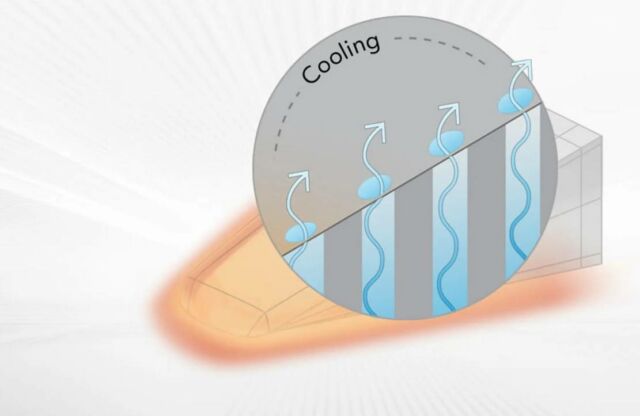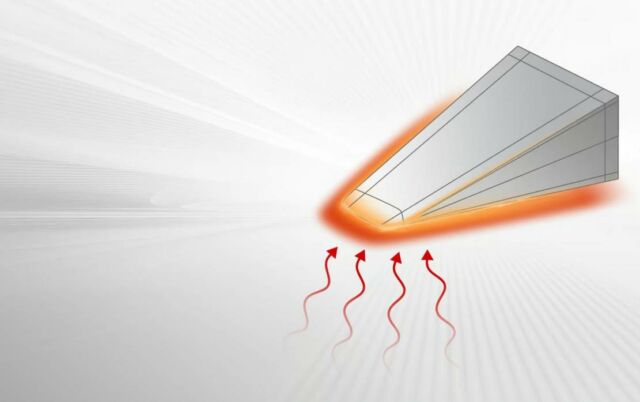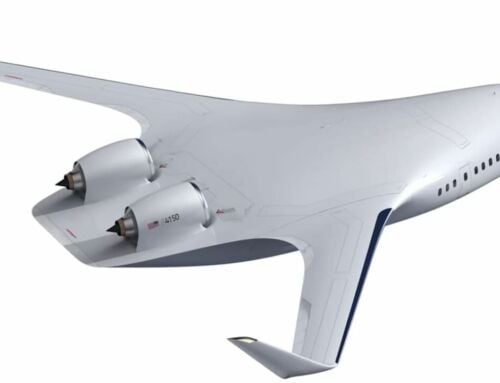
How to protect hypersonic vehicles from heat? Scientists are proposing a new method: Make them sweat.
The problem has perplexed scientists for years. RTX researchers validate ’transpiration cooling’ in a test for DARPA.
Hypersonic missiles can dart through the atmosphere faster than a mile per second. But at those speeds, things get so hot that many materials would melt – including those most likely used for the tip, or, as it’s sometimes called, the leading edge.

John Sharon of the RTX Technology Research Center said:
“You go from something sharp to something kind of rounded and when you go from sharp to rounded, you increase your drag, and you end up slowing the vehicle down, which impacts how fast and far we can fly.”
The Defense Advanced Research Projects Agency wanted to solve that problem, so they asked researchers around the country for their ideas.
Sharon and his team had one that was simple but intriguing: Make the missile sweat.
Just as humans use pores to cool our bodies, the team sought to show that artificial pores – called transpiration cooling channels – in the tip of the missile could do the same.
“Transpiration cooling has been around for years. Nature has already figured it out – trees use it, and we use our skin. But how do we leverage it for other engineering applications?”
Images credit RTX
source RTX





Leave A Comment